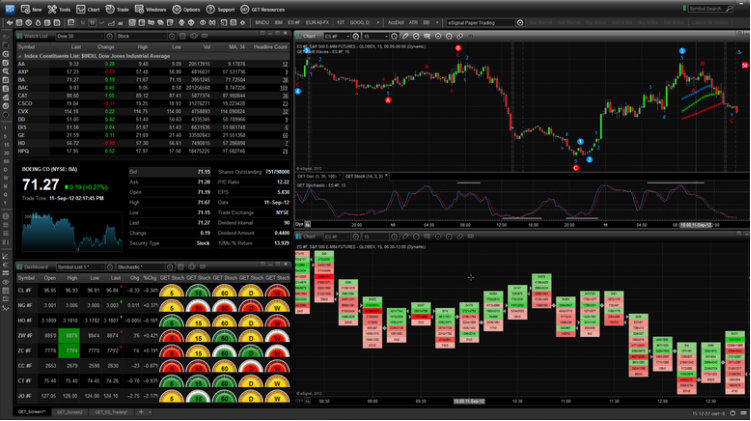Thousands of companies around the world trade openly at any given time.
This raises a fundamental challenge for investors seeking to pick individual equities: how do you determine which stocks to purchase?
Others seek to outperform the market by selecting specific stocks. However, most investors choose to buy index funds as a simple way to “invest in the market” and likely receive historical average stock market returns.
They may be interested in day trading, rapidly entering and exiting the market for quick profits. Alternatively, they may purchase and hold specific equities for long-term gains and dividends.
This is where stock screeners are helpful.
Stock Screening Basics
Screeners for stocks provide several filters and search parameters to restrict the field from thousands of stores to a handful. The more comprehensive the screening filters, the greater the screener’s ability to locate precisely the type of stock you desire.
Stock screeners are frequently confused with other tools and services, such as stock scanners, stock brokerage services, and stock pickers, by novice investors. Understandably so, as they frequently overlap.
Stock brokerage accounts facilitate the purchasing and selling of stocks. However, most sites also provide stock screeners to help you sort through the thousands of available stocks.
Similarly, numerous stock scanners assist in sorting stocks. A stock scanner is distinguished by its principal function of streaming real-time data and information on certain stocks or exchange-traded funds (ETFs).
In contrast, stock screeners enable you to reduce the thousands of accessible stocks and ETFs to a select few depending on your specified criteria. Nevertheless, many screeners incorporate scanners and vice versa.
Unlike stock scanners and stock screeners, stock pickers are not self-service products. Experts in investing and analysis conduct the necessary research and offer specific stock recommendations.
How to Evaluate a Stock Screener
Not all stock screening software is equal.
Search initially for robust screening filters. A stock screener is only as valuable as its capacity to locate stocks that meet specific criteria. Several typical screening filters include:
- Stock exchange
- Country or region
- Industry
- Market capitalization (cap)
- Dividend yield
- Price
- Target price
- Trading volume (current, average, or relative)
- Volatility
- Price-to-earnings ratio (P/E)
- Earnings per share (EPS)
Some stock screeners have an internal rating algorithm for equities and mutual funds. While many traders and investors like this feature, you should not place too much weight on an algorithm’s assessment of a company.
The finest stock screeners mix versatility and usability. Stock screeners should ideally allow you to filter your search with pinpoint accuracy and without a tedious UI. Even novices should find them easy to utilize and you must check the highest return of stocks.
Lastly, specific stock screeners need payment, so cost becomes a consideration. If you’re unfamiliar with stock screeners, start with free services to educate yourself on how they operate before investing in an expensive subscription.
Best Stock Screeners
Are you willing to roll up your sleeves and get your hands filthy with stock screening?
Before committing to a paid subscription, evaluate the following stock screeners and their free trial policies for paid services.
1. Seeking Alpha Premium
Experienced buy-and-hold investors, day traders, and market analysts rely on Seeking Alpha Premium. This is partially owing to its industry-leading stock screeners.
As a user of Seeking Alpha, you have access to over two dozen proprietary Seeking Alpha screeners, such as:
- Leading Growth Stocks
- Top Yield Monsters
- Most Shorted Securities
- Leading Stocks by Quant (all stocks across the quant universe, ranked by quant score
- Top-performing stocks by industry, such as Top Technology Stocks and Top Healthcare Stocks.
Or, if you want, you may create your own Seeking Alpha screener using the most critical factors to your investment thesis, investment style, and investment ambitions.
And Seeking Alpha Premium provides much more than a stock screener with limitless customization options. It is a comprehensive market intelligence suite designed to make you a better investor.
For $19.99 per month – a savings of $120 per year — Seeking Alpha Premium provides the following unique features and more:
- Unrestricted access to premium content created by Seeking Alpha’s authors.
- Key metrics including Author Ratings and Author Performance on Seeking Alpha
- Exclusive quantitative ratings
- Unlimited audio of earnings call
- Unlimited transcripts of earnings calls
- Rich article sidebars provide important info, charts, and ratings.
- Investment performance monitoring
2. Trade Ideas
Trade-Ideas is hard to match for real-time scanning and screening.
The platform is rapid, with data centers strategically positioned near significant stock exchanges. It also comes with several pre-programmed scans that you may personalize and combine with your own set of criteria.
Backtesting ideas for investing and trading allows investors to see how they would have performed in the past.
However, one aspect of Trade Ideas that distinguishes it is its artificial intelligence. Its AI tool, Holly, scans millions of trading opportunities and alerts you when it discovers one with high upside potential using technical, fundamental, and social data. This allows you to find chances you would not have spotted otherwise.
Trade-Ideas only works with stock exchanges in the United States and Canada. While a free demo is available, most of the features require a paid membership. Monthly plans begin at $83 per month.
3. Stock Rover
Another exceptional alternative, Stock Rover, specializes in scanning U.S. and Canadian stocks.
The web software provides more than 150 screening categories and makes screening ETFs as simple as screening equities and mutual funds. You can refine your results by combining numerous filters with if-then logic to generate complex equations.
Stock Rover also offers powerful scanning capabilities, with data, watchlists, and filters that may be updated every minute if desired.
Stock Rover is especially effective for long-term investors. It is compatible with most major brokerage accounts, including Vanguard, Charles Schwab, T. Rowe Price, Fidelity, and TD Ameritrade.
Once connected, it provides more robust reporting, portfolio rebalancing suggestions, asset allocation correlation testing, and portfolio analysis.
The Stock Rover rating system provides you with concise feedback for review. A scale from 1 to 100 offers multiple rating categories for each security: overall, growth, valuation, efficiency, financial strength, dividends, and momentum.
Stock Rover is less useful for day traders. Compared to its more than 150 financial indications, the screener only provides nine technical indicators. It benefits value and income investors more.
As a reference to Warren Buffett’s emphasis on fundamental analysis, it also includes a “Buffettology” screener setting for locating companies with a high margin of safety and fair value indications.
Similar to TradingView, Stock Rover has a freemium business model. The free account option helps get started, but premium membership is required for full functionality. Thankfully, they begin at just $7.99 per month.
4. Atom Finance
Atom Finance aspires to provide institutional-grade functionality with retail-grade usability. And it is generally adequate.
You can link additional brokerage accounts to your Atom. This generates a bird’s-eye view of your complete investment portfolio, similar to Mint or Personal Capital, to see your total asset allocation and recommendations for diversification.
However, it does not end there. Beginning with real-time stock quotations and institutional-grade financial news sources, sophisticated stock screening tools enable you to explore individual stocks and more significant patterns.
The available corporate data includes stock research from all central banks and financial institutions, SEC filings and transcripts, analyst forecasts and recommendations, and comprehensive historical financial data. Atom’s advanced document search enables you to search for terms across many news items, best day trading platforms, documents, and transcripts to uncover hidden patterns and trends.
This contributes to a complete picture of a company’s performance throughout time.
Atom Hubs is another cool feature. Taking the concept of watchlists one step further, hubs let you compare companies by your preferred metrics, allowing you to select from dozens of pertinent data points. These comparisons are brought to life through charts and graphs depicting the performance of various equities.
Your hubs also compile pertinent stock-related news, papers, and events. You can even distribute them to other investors for feedback.
The third strength highlighted by these hubs is their investor community and chat tools. Identify the discussion channels most pertinent to your investments and investing style, and interact with other investors to achieve tremendous success.
Their Premium features, which include analyst commentary, price movement explanations, equities research summaries, and price target updates, are available for $6.99 a month.
5. Zacks & Nasdaq Screener
The Nasdaq stock screener is now powered by Zacks, which provides a comprehensive collection of free stock screening tools. It has more filters than Finviz.
Zacks excels by allowing you to specify a specific value or range for its screening filters instead of choosing from a drop-down menu of predefined fields. This provides far more detailed screening findings.
In addition, Zacks provides more EPS search criteria than the competition. For instance, you can analyze EPS surprise percentages, such as the most recent EPS surprise, previous EPS surprises, and the average EPS surprise (from the last four quarters).
Can save search settings and export results to a spreadsheet for future study.
Additionally, Zacks offers other screening criteria for analyst ratings, such as upgrades, downgrades, and specific rating revisions. This feature, along with many others, requires a premium membership to access.
Many of Zacks’ better features, such as predefined screening criteria based on formulae employed by renowned investors, are available only for a fee. Premium accounts cost $249 per year, and they also offer several other costly services.
6. TradingView
Although a bit confusing for novice traders and investors, TradingView provides an amazingly flexible and inexpensive screening tool.
You can begin screening stocks and ETFs without registering and acquaint yourself with the numerous accessible possibilities. With over 150 fundamental and technical filters, it is possible to categorize stocks precisely. And if you only want to view stocks or ETFs, you can quickly move between the two.
TradingView excels in terms of the variety of assets and investments it includes.
It contains international stocks and funds worldwide, allowing you to compare American and foreign stores using the same set of tools. It provides access to cryptocurrencies, foreign exchange (FX) currency comparisons, and international securities.
TradingView also provides a straightforward rating system for equities, showing whether a security is “buy,” “sell,” “strong buy,” or “strong sell.”
A notable feature of TradingView is comparing more considerable economic indicators with company-specific data. For instance, you can search for trends by comparing a company’s performance with the national unemployment rate over time.
TradingView employs a freemium business strategy with both free and paid options. The free edition contains advertisements but provides the majority of features.
7. Finviz
Finviz (a combination of “financial” and “visualizations”) is essentially free as a stock screener.
Its Finviz Elite plan includes a real-time stock scanner, aftermarket data, correlation data between stocks, and backtests, which simulate the performance of potential trading or investment strategy using historical data. The plan begins at approximately $25 monthly.
However, its free plan does not require registration and contains various screening criteria. The only major disadvantage is delayed data updates, which affects day traders more than long-term investors. The latter might utilize Finviz after the close of markets.
Finviz’s user-friendly and straightforward web platform makes it an ideal starting place for novice traders and investors. Its 29 core filters and 17 technical criteria are sufficient to help you learn the ropes but not so numerous as to be overwhelming.
Historically, Finviz did not permit users to choose numerous alternatives within the same filter field simultaneously. You couldn’t, for instance, choose two economic sectors; you could choose either one or all, but not a specified few. Finviz has since resolved this issue for Elite subscribers, enhancing the platform’s adaptability.
Consider Finviz to be an ideal learning platform. As your level of sophistication increases, you can consider more complicated solutions as necessary.
8. TC2000
TC2000 has excelled at stock screening and scanning for over 25 years.
It provides an extensive selection of fundamental and technical screening criteria. However, TC2000 also allows you to design unique screening criteria, subsequently overlaying on existing stock charts. Its charting is unrivaled in the stock screener industry due to the ability to incorporate specific data into graphic charts.
TC2000 also allows for greater customization of alerts than most other screeners, allowing you to be notified in real-time when your custom combination is optimal. This creates an excellent platform for day traders combined with rapid real-time scanning.
Unfortunately, only the American and Canadian stock markets are supported by TC2000. It is distributed as downloadable and installable software, and some users have complained that its web-based platform is inferior to its installation counterpart.
Like other screeners, TC2000 offers both a free and a premium version, with premium options beginning at approximately $10 per month.
If you have ever utilized FreeStockCharts.com, you should know that TC2000 acquired them and included their capabilities in its fre service.
9. TD Ameritrade
Unlike Vanguard, which is recognized for its preference for long-term buy-and-hold, TD Ameritrade is an online brokerage account geared for day trading.
In this regard, they provide no less than six platforms. Their Thinkorswim tool combines versatile data analysis with simple, rapid trading.
TD Ameritrade does not charge commissions on trades, a bonus. They were among the first commission-free online brokerages.
Its platforms have an abundance of free tools, such as the Stock Hacker tool for filtering and real-time scanning. For instance, you can set up scans for technical patterns such as channels, wedges, and flags and then act on them immediately by purchasing on the site.
All for nothing. Notably, the paperMoney feature allows you to practice trading with fake money. To access these features, you must open a brokerage account with them.
10. Market Gear
Market Gear is a solid yet accessible trading platform for independent traders.
The trading platform is integrated with your brokerage account, allowing you to trade stocks and options directly through Market Gear. You can access it online, as downloadable software for your PC or Mac, or through their mobile application. All deliver real-time notifications based on the parameters of your screener.
The Market Gear Stock Screener module includes many data points, allowing you to refine your alerts precisely. Filter these data points using sliders, drop-down menus, or manually enter the desired ranges.
Market Gear, like many other screener platforms, enables bespoke graphing. Additionally, you can conduct comprehensive backtesting to determine how your trading technique would have performed historically.
Market Gear has a built-in “trade notebook,” enabling you to keep track of all your prior deals and their outcomes and your notes about what went good or wrong and how to improve in the future. The most successful traders continually evaluate their trades and performance.
After a two-week free trial, Market Gear’s “Essential Kit” costs $45 per month, the “Signature Kit” costs $75 per month, and the “Master Kit” costs $145 per month. You can receive a discount if you pay annually.
Last Word
Day traders and individual stock pickers have a more critical requirement for access to extensive data analysis than index fund participants. Superior screeners are required to sort through the tens of thousands of equities on the worldwide market.
If you’re new to the game, use a free stock screener like Finviz or TD Ameritrade. As your confidence and competence increase, you can experiment with more advanced screening tools like TradingView and Stock Rover.
There is nothing wrong with enjoying the market a little bit. However, never trade with funds that you cannot afford to lose. When you begin trading with real money instead of virtual currency, you should start slowly and with a small investment.
Read also : SW418 .




